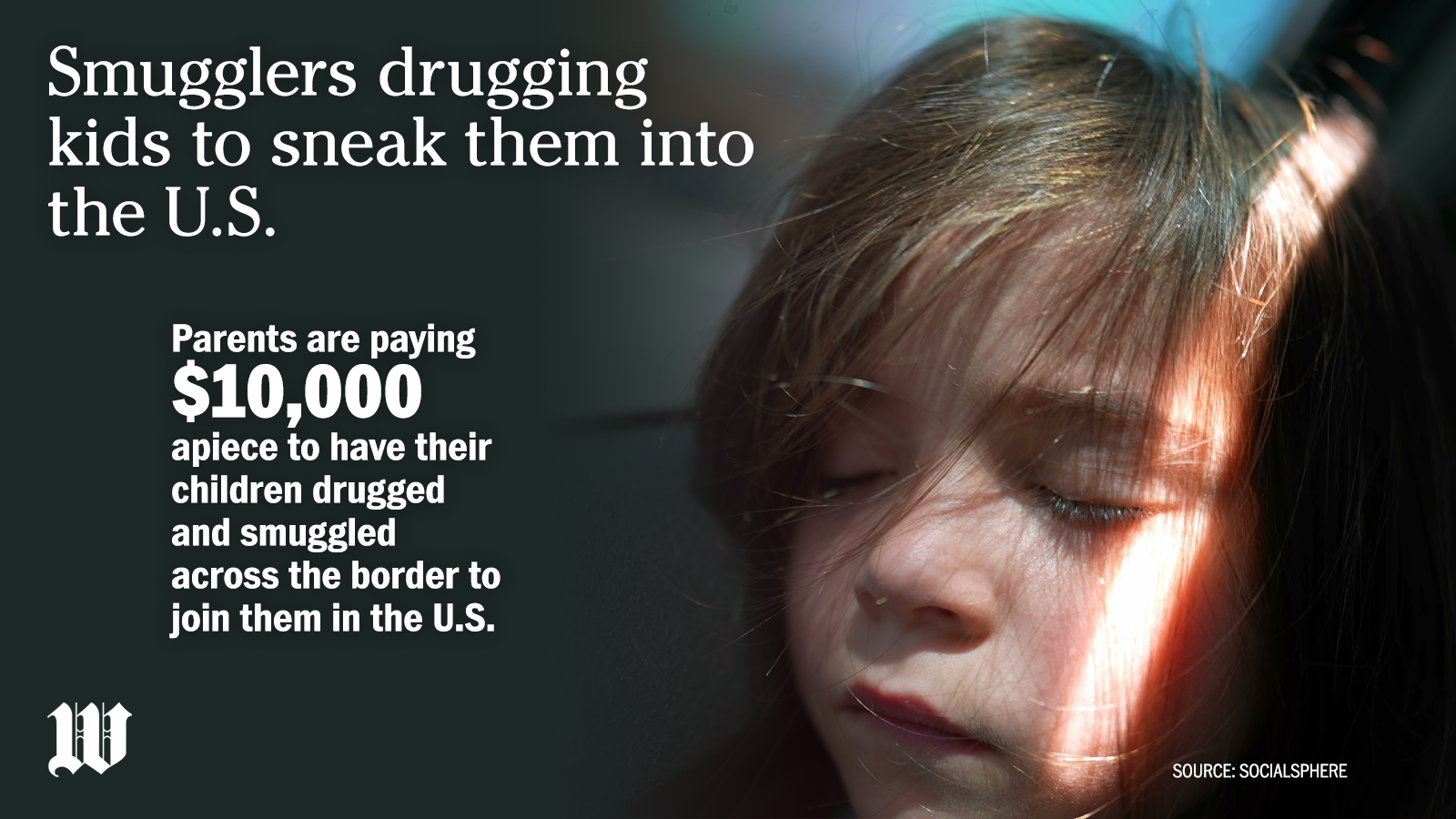Irving Alberto had two children in his Tesla as he drove into the Otay Mesa border crossing in California, and officers became suspicious when he couldn’t produce a birth certificate or even any photos on his phone of the girl sleeping in a car seat.
After repeated attempts, officers managed to shake the girl awake. She told them Mr. Alberto wasn’t her father.
According to court documents, Mr. Alberto was a smuggler bringing the girl across the border to be reunited with her parents, who were living in the U.S. illegally. She had been drugged with cold and flu medicine to try to keep her asleep during the border inspection.
The incident is part of a disturbing trend in smuggling. Parents are paying $10,000 apiece to have their children drugged and smuggled across the border to join them in the U.S.
Some smugglers use cold medicine, but the go-to appears to be melatonin gummies. Drivers feed children as many as four before crossing the border.
The goal is to keep the children asleep and hope that sympathetic border officers will wave through the vehicle without trying to verify the relationships of those inside.
The Washington Times’ database of smuggling cases shows the scheme works. The Times has identified cases of Border Patrol agents finding illegal immigrant children smuggled deeper into the U.S.
“These smugglers care nothing about the kids,” said Jessica Vaughan, policy studies director at the Center for Immigration Studies. “They’re just a commodity that they are making money off of. If something goes wrong, things could turn ugly for the kids.”
The tactic is used on what the government calls unaccompanied alien children, or UACs. They arrive at the border without a parent and are the toughest of all border cases to handle.
Often, it is parents living in the U.S. illegally who are paying to have their children smuggled across the border. The government will sometimes punish the smugglers and deliver the children to their parents.
All of the children in cases reviewed by The Times were Mexican.

Ms. Vaughan said UACs from countries farther afield, under U.S. law, are usually quickly processed and turned over to sponsors — often their parents living in the U.S. illegally. The government effectively facilitates and completes the smuggling journey.
That law doesn’t apply to UACs from Canada and Mexico, so Mexican parents try to smuggle their children farther into the U.S.
Most of the cases reviewed by The Times were in California, though officers in that jurisdiction may provide more details in their criminal complaint affidavits than others.
Customs and Border Protection didn’t respond to a request for comment for this report.
The attorney for Mr. Alberto also didn’t respond to an inquiry from The Times.
Officers said Mr. Alberto told them the mother of the girl he was smuggling was paying him $8,000.
One woman said she was to be paid $10,000 per child in her smuggling attempt. Others did it without pay, usually as a favor to a relative.
Attorneys for cousins Arline Gomez-Arreola and Georgina Arreola said both of them were traumatized after being separated as children from their parents who ended up behind bars.
“They were acting at the behest of the child’s father and believed that they were bringing the child to other family in the United States as directed by the father,” Georgina Arreola’s attorney told the judge in pleading for leniency. “Both these women experienced family separation as young children, and it was precisely the kind of request that Georgina Arreola could not refuse because of what happened to her when she was 5.”
The judge put each of them on probation.
Ms. Vaughan said the sense that smugglers are helping people is pervasive among some in the border community.
“Often, there is not a stigma attached to participating in human smuggling, even when it involves children,” she said. “That makes it easy for the smugglers and hard for law enforcement.”
Children often are the ones who sink the smuggling attempts.
When officers can wake children, they state their real names, which don’t match the documents the smugglers have. At that point, the smugglers usually admit to the fraud.
Sometimes, the drivers drug the children. Other times, they find the children already drugged.
One child reported being given eight melatonin gummies. Another said he was told to take four gulps of cold medicine.
None of the cases reviewed by The Times indicated children needed hospitalization because of the sleep medications, but that is a danger.
A report released this year by the Centers for Disease Control and Prevention estimated that 11,000 children were treated in emergency rooms for melatonin use from 2019 through 2022.
Judges are taking notice.
“There is a substantial likelihood that that minor could have overdosed,” U.S. District Judge Linda Lopez told a smuggler, Ashley Hernandez, after a 2022 attempt to smuggle a Mexican boy through the San Ysidro border crossing.
Smugglers dressed the boy in girls’ clothes, pasted a wig to his head and drugged him with melatonin. Hernandez used her daughter’s birth certificate to try to fool border officers. She was to earn $2,000 for the smuggling trip.
Detaching the wig from the boy’s scalp took more than five hours. Hernandez said she didn’t know she was carrying a boy until officers told her afterward.
Judge Lopez delivered an eight-month prison sentence.
The boy told border officers that his brother had been smuggled into the U.S. the same way.
• Stephen Dinan can be reached at sdinan@washingtontimes.com.



Please read our comment policy before commenting.